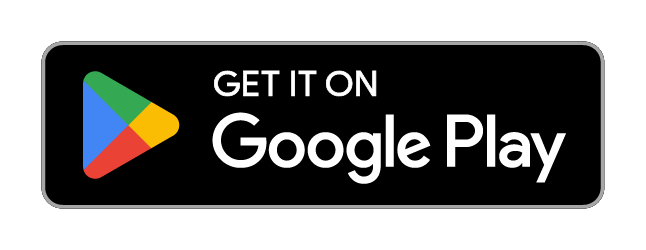Effective tutoring strategies for K-12 students
The COVID-19 pandemic disrupted millions of kids' learning, leaving many behind in reading and math. Tutoring can be the answer, but it's important to know that not all tutoring strategies are created equal.
The Institute of Education Sciences reported on a 2020 meta-analysis of 96 studies on tutoring programs to share what works best for improving student achievement. It revealed that high-frequency tutoring sessions—at least three times a week for at least 30 minutes—during the school day make the biggest difference in learning outcomes.
To determine other effective tutoring strategies, Scholarship Institute reviewed multiple educational resources. Building trust, setting goals, making learning interactive, tracking progress, and adapting to different learning needs all contribute to tutoring success.
Building trust and setting realistic goals
Before any real learning happens, students need to feel safe and supported. Trust sets the foundation for effective tutoring, while clear, achievable goals give students direction and motivation. Together, they create the conditions where growth can actually take place.
Start by making a connection.
Earning a student's trust can change everything. Students do better when they feel seen and supported. That can start with a quick "How was your day?" or a casual icebreaker. A little back-and-forth goes a long way. Once that relationship is there, kids feel more comfortable tackling challenges and stretching their skills, which supports their growth.
Set goals that mean something.
"Get better at reading" won't cut it. Goals need to be clear and doable. Think SMART: specific, measurable, achievable, relevant, and time-based. Something like "Raise reading scores by five points in a month" gives students a target and motivation. When they help set the goal, they often care more about reaching it.
Making tutoring something students want to do
Tutoring works better when students are engaged and excited to participate. Interactive lessons that are connected to real life can transform sessions from a chore into something students look forward to. Engagement is the difference between passive learning and lasting progress.
Use the right tech
Learning doesn't have to be dull. Platforms like Kahoot! and Edpuzzle make things interactive. Students can compete, work in teams, and stay more engaged. AI-enhanced tools or programs can even adjust lessons on the fly. They can spot where a student is struggling and personalize practice so time is spent where it matters most.
Less lecture, more action
Students can learn more when they're active participants, not just listeners. According to Tutor Portland, active tutoring leads to better academic results. Tutors who ask questions, use visuals, or get students moving also see students' attitudes toward learning improve. Mixing it up—writing, talking, building, watching—helps students stay more interested in the material.
Keep it real
When lessons connect to life, students pay attention. Use real-world stuff, like sports stats in math, song lyrics in English, or news clips for current events. These connections make lessons more interesting and memorable. They also help students understand why what they're learning matters outside the classroom.
Tracking progress that actually matters
Measuring growth is more than just improving scores. Keeping students motivated and giving everyone involved a clear picture of success is also key. Regular progress checks and shared data help tutors, teachers, and families stay in sync. The right tracking tools help make progress visible and rewarding.
Celebrate the small wins
Track progress weekly, or even daily. Once a student meets a goal, celebrate the accomplishment, then set a new one that builds on their progress. This keeps momentum going and helps students see learning as a continuous journey, not a finish line. Quick wins keep students motivated—charts, stickers, dashboards, whatever works.
Use tools that everyone can see
When tutors, teachers, and parents all see the same progress data, everyone stays on the same page. Many tutoring platforms and learning management systems now include built-in dashboards, or schools can use free tools like Google Sheets to create simple progress trackers that everyone can view.
Adapting to the ways students learn
No two students learn exactly the same way, which means flexibility is key. Adapting tutoring methods to different styles and needs ensures that every child can access the material in a way that works for them. A responsive approach helps all students feel included and capable.
Mix up the methods
The VARK model helps to identify what kind of learner you are. It stands for visual, aural, reading/writing, and kinesthetic learning. Using a variety of teaching methods like these keeps lessons fresh and gives students a chance to connect with the material in different ways. Even small changes in how information is presented can make a big difference in understanding and retention, for example:
- Visual learners: Use charts and color.
- Auditory types: Try recordings and conversations.
- Reading/writing learners: Give them structured notes and clear text.
- Kinesthetic learners: Let them build, act out, or move.
Support what each student needs
Tutors also need to shift strategies when working with students learning English, coping with trauma, or managing disabilities. A 2020 OECD report highlights three key factors that make the biggest difference for students who have faced adversity: consistent support from caring adults, safe and positive environments, and the development of strong social and emotional skills. By prioritizing these areas, tutors can create conditions where every student has a real chance to succeed.
What experts recommend
The University of Chicago Education Lab and partners have spent years studying tutoring. Based on their 2023-2024 school year findings, they recommend integrating tutoring into the regular school day. Their research shows that high-dosage, small-group tutoring (two students per tutor for more than 130 hours a year) led to the equivalent of one to two-and-a-half years of additional math learning in a single year.
Students also earned higher GPAs and had fewer course failures, suggesting that tutoring works best when it's built into the school day rather than added on after. According to the NWEA 2024 report, the specific structure that makes high-dosage tutoring most effective is 30-minute sessions held two to three times per week during the school day.
To consistently produce the strongest outcomes, the sessions should be delivered one-on-one or in very small groups with trained tutors using an aligned curriculum. This means the tutoring lessons follow the same standards and topics students are learning in class. This way, tutoring reinforces classroom instruction instead of introducing unrelated material, helping students strengthen the exact skills they need to succeed.
Conclusion
Research shows that tutoring is most effective when it happens often, takes place during the school day, and reinforces what students are already learning in class. The strongest programs also build trust, set meaningful goals, keep students engaged, track progress clearly, and adapt to each student's needs. When these pieces come together, tutoring can close learning gaps and give students the foundation to thrive long term.
This story was produced by Scholarship Institute and reviewed and distributed by Stacker.






